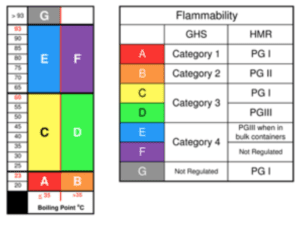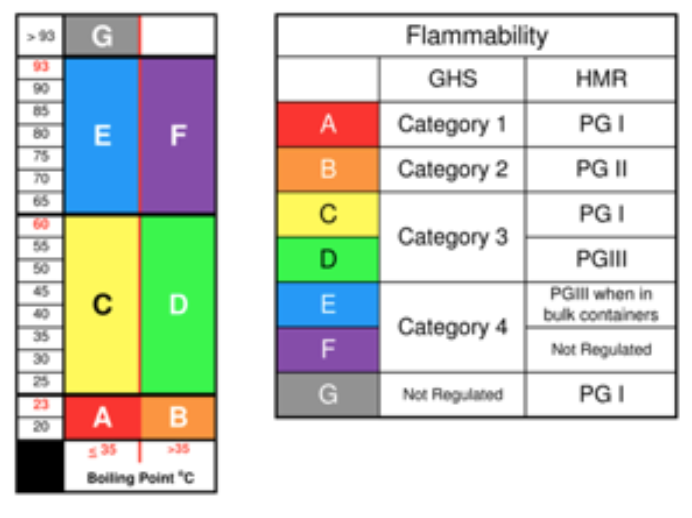
Manufacturers and distributors alike are subject to compliance, but attitudes toward compliance from those entities range from blissful ignorance to deliberate defiance. But navigating the laws and agencies can prove challenging at best. The goal of this article series is to provide insight into the communication and handling of what is and is not hazardous and who is responsible for its compliance.
As with any subject, the terminology is a fundamental component of building a solid foundation of understanding. Often, the term ‘hazardous material’ is used to describe hazardous chemicals, hazardous materials, and hazardous substances. In this series, the term ‘hazardous products’ will serve as a collective reference to all things hazardous – chemicals, materials, and substances – to prevent confusion.
Hazardous Chemical ≠ Hazardous Material ≠ Hazardous Substance
One critical misnomer that leads to many hazardous product violations is the reference to all things hazardous as ‘hazardous materials.’ However, ‘hazardous material’ is defined by the Pipeline and Hazardous Materials Safety Administration as it pertains to transportation, ‘hazardous chemical’ is defined by OSHA regarding hazard communication, and ‘hazardous substance’ is the term the EPA uses to reference elements and compounds identified as hazardous to the environment.
Below are the definitions and references to these three terms:
- Hazardous Chemical: This refers to any chemical which is classified as a physical hazard or a health hazard, a simple asphyxiant, combustible dust, pyrophoric gas, or hazard not otherwise classified. For more information, see 29 CFR 1910.1200(c).
- Hazardous Material: This refers to any substance or material that the Secretary of Transportation has determined “is capable of posing an unreasonable risk to health, safety, and property when transported in commerce, and has designated as hazardous under section 5103 of Federal hazardous materials transportation law” (49 U.S.C. 5103). The term includes hazardous substances, hazardous wastes, marine pollutants, elevated temperature materials, materials designated as hazardous in the Hazardous Materials Table (see 49 CFR 172.101), and materials that meet the defining criteria for hazard classes and divisions in part 173 of this subchapter. For more information, see 49 CFR 171.8.
- Hazardous Substance: This refers to any substance the EPA defines as hazardous through designations in 40 CFR 302 and various tables throughout the regulations. For tables of hazardous substances, see 40 CFR 116.4 and 40 CFR 302.4.
This isn’t to say there isn’t overlap between the agencies as they do reference one another’s regulations.
For example, the EPA references reportable quantities for hazardous substances which are referenced by PHMSA in the HMR. OSHA refers to hazardous materials with regards to hazard communication. EPA references hazardous and universal waste as being subject to 49 CFR when being offered for transport. The United States Postal Service has its own regulations regarding hazardous materials transported through the mail since one federal agency cannot hold jurisdiction over another but directly references the HMR as the criteria that must be applied.
Hazardous Terms & Compliance: A Key Guide to Regulations
Understanding the distinctions between hazardous terms is essential for compliance with hazardous materials regulations. Various agencies, beyond those commonly cited, refer to these terms in their regulatory requirements, making it crucial to grasp their definitions.
For instance, city governments often adopt building and fire codes that use the term “hazardous” differently. Some adhere to OSHA’s definitions of hazardous chemicals, while others refer to the Hazardous Materials Regulations (HMR). This inconsistency can create challenges, as substances deemed hazardous by one agency may not be recognized by another.
Hazardous Terms & Compliance
Both the Globally Harmonized System (GHS) and the HMR define flammable liquids based on closed-cup flashpoints. However, GHS allows for open-cup values under specific conditions, whereas the HMR does not. GHS classifies liquids as flammable if they have a flashpoint of 93°C or lower, while the HMR restricts this classification to liquids with a flashpoint of 60°C or less.
Additionally, the HMR emphasizes the hazardous nature of any liquid with a boiling point below 35°C, categorizing it as Packing Group I, which indicates a higher flammability risk.
The accompanying tables illustrate the differences between GHS and HMR definitions of flammable liquids. These discrepancies also extend to other hazardous properties, such as toxicity, where GHS encompasses a broader range compared to the HMR.
Achieving Hazardous Compliance According to Regulations
To achieve compliance with hazardous materials regulations, it’s vital to understand the various agencies involved, their definitions of hazardous materials, and their specific expectations. If you’re seeking expert assistance, connect with TotalSDS today. Our hazardous materials regulations guide can help ensure your compliance and safety in handling hazardous products.

